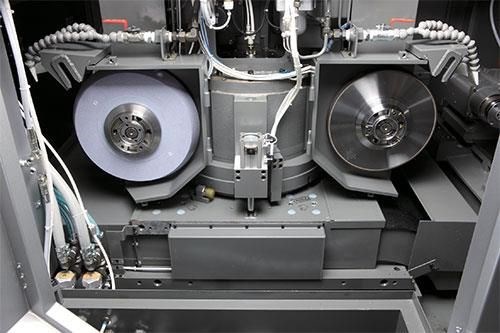CNC Grinding with Less Labor
As difficult as it is to find skilled machining personnel in general, finding skilled grinding personnel is more difficult still.
Share






As difficult as it is to find skilled machining personnel in general, finding skilled grinding personnel is more difficult still. Meanwhile, many shops are doing more grinding than ever, as they respond to tight lead times by bringing grinding in-house. How can shops minimize their need for skilled labor in grinding?
In this article, Shane Farrant, national product manager for Toyoda Machinery USA, and Steve Earley, the company’s proposal engineering supervisor, suggest two ways:
1. In-process gaging. This is one of the most accessible ways to reduce human intervention in grinding, they say. Automatic gaging of the workpiece allows the CNC to respond to measurement trends resulting from the wheel’s changing diameter. With the process changing offsets on its own to maintain consistency, the wheel might not have to be dressed as often.
2. Universal grinding machine. This is a much bigger step, but potentially a valuable one. A universal machine makes it possible to switch between multiple grinding wheels in the same setup, so ID and OD grinding can be performed on the same machine, or rough grinding and finish grinding can be performed within a single cycle—with no extra handling or setup between these steps.
One step that might not be the answer is switching to a more expensive CBN wheel, they say. CBN’s effectiveness is material-dependent. It is good for grinding hard metals. In soft metals, the material might load the wheel to the same extent as a conventional wheel, resulting in a process in which dressing is just as frequent.
Related Content
-
Building Machines and Apprenticeships In-House: 5-Axis Live
Universal machines were the main draw of Grob’s 5-Axis Live — though the company’s apprenticeship and support proved equally impressive.
-
DN Solutions Responds to Labor Shortages, Reshoring, the Automotive Industry and More
At its first in-person DIMF since 2019, DN Solutions showcased a range of new technologies, from automation to machine tools to software. President WJ Kim explains how these products are responses to changes within the company and the manufacturing industry as a whole.
-
How I Made It: Amy Skrzypczak, CNC Machinist, Westminster Tool
At just 28 years old, Amy Skrzypczak is already logging her ninth year as a CNC machinist. While during high school Skrzypczak may not have guessed that she’d soon be running an electrical discharge machining (EDM) department, after attending her local community college she found a home among the “misfits” at Westminster Tool. Today, she oversees the company’s wire EDM operations and feels grateful to have avoided more well-worn career paths.
























